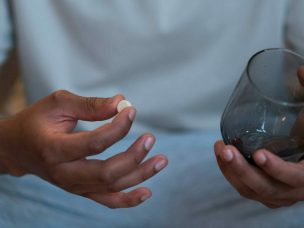![]() Medically reviewed by Dr. Kimberly Langdon Cull, M.D. on Sept. 20, 2023
Medically reviewed by Dr. Kimberly Langdon Cull, M.D. on Sept. 20, 2023
The therapeutic effects of transcranial random noise stimulation and cognitive training on ADHD symptoms are long-lasting, according to a recent study.
Attention-deficit/hyperactivity disorder (ADHD), a neurodevelopmental condition that causes inattention, hyperactivity, and impulsivity, affects 5.2% of children globally. Transcranial random noise stimulation (tRNS) uses electrodes to increase neural responses. It is unknown if cognitive training (CT) can treat ADHD alone.
A study published in the journal Translational Psychiatry investigated the effects of high-frequency tRNS combined with CT on symptoms in children with ADHD.
Study Population
Twenty-three children (6–12 years old) with ADHD who were not taking any medication were randomly assigned to receive either tRNS coupled with CT or a sham-controlled treatment in a double-blind study. The application window spanned from December 2019 to December 2021.
Effect of Combination Therapy With tRNS and CT on the Resting State
The average score on the ADHD resting state (ADHD-RS) was 6.36 ± 1.37 in the active group and 10.58 ± 1.46 in the sham group after treatment. A primary impact of stimulation was seen, with tRNS + CT resulting in less ADHD symptomatology than sham + CT. After therapy, it was determined that 55% of participants in the tRNS+CT group had significantly improved clinically, compared to 17% of those in the sham group. At follow-up, 64% of participants in the active group had clinically meaningful responses.
Effect of tRNS and CT on the Sleep Schedules of Patients
Parents reported a slight decline in sleep quality after active vs. sham stimulation, but there was little impact of stimulation type post-treatment on the overall sleep index score (p = 0.059) and no significant influence of time. There was also a significant impact of therapy, suggesting that wake-up scores worsened during active treatment but didn’t change much at follow-up. As a result, greater wake-up frequencies and longer sleep onset latencies were seen in the treatment group compared to the control group.
Decrease in the Resting State EEG Results After Therapy
Also, compared to the control group, the experimental group’s resting state EEG periodic beta bandwidth of the extracted peaks was lower compared to those of the control group after treatment and at follow-up. The experimental group had a lower aperiodic exponent than the control group, which indicates a more balanced ratio of cortical excitation to inhibition and has been linked to enhanced cognitive performance. This was consistent with prior tRNS findings in individuals without ADHD; however, it was only significant when using a directional hypothesis.
Short treatment courses of these therapies provide reasonably long-lasting effects and an outstanding safety profile, making them a candidate for inclusion in future studies.
Source:
Ornella, D., Noam, M., Shachar, H., Itai, B., Roi, C. K., & Mor, N. (2023). Transcranial random noise stimulation combined with cognitive training for treating ADHD: A randomized, sham-controlled clinical trial. Translational Psychiatry, 13(1), 1-11. https://doi.org/10.1038/s41398-023-02547-7










